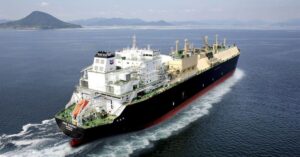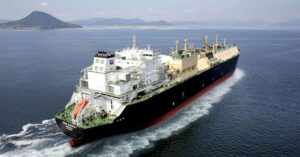
U.S. Navy Announces New Strategy To Counter China’s Military Power By 2027
September 20, 2024
SeaCube Becomes 1st Leasing Firm To Acquire Carrier Transicold’s OptimaLINE Refrigerated Containers
September 20, 2024

Wärtsilä, a leading technology company, has signed an agreement with Chevron Shipping Company LLC to convert the engines on six of Chevron’s LNG carriers from dual-fuel to spark gas operation.
The initiative aims to reduce GHG emissions by lowering methane slip, complying with Chevron Shipping’s objective to reduce the carbon intensity of its operations.
Wärtsilä ordered the first two conversions in the third quarter of 2024, becoming the first project of its kind in the maritime industry. The use of LNG as fuel causes methane emissions that can escape into the atmosphere if not fully combusted, a process known as methane slip.
While methane lasts for a shorter duration in the atmosphere than carbon dioxide, it traps around 25-30 times more heat over 100 years. Reducing these emissions is crucial to achieving lower carbon intensity across the maritime sector.
Wärtsilä’s unique 50 dual-fuel to spark gas conversion project will convert the existing engines to use spark ignition instead of diesel pilot fuel for combustion. The conversion aims to improve combustion efficiency and reduce methane emissions.
Industry leaders have issued statements highlighting the importance of this collaboration.
Chevron Shipping’s President reaffirmed the company’s commitment to reducing methane emissions intensity within its LNG fleet, focusing on the measures being taken toward a more sustainable future in marine transportation.
Meanwhile, Wärtsilä’s President described the initiative as a major step in the transition to low-carbon fleets, reaffirming the company’s long-standing expertise in reducing methane slip from LNG-powered engines.
The collaboration expands Wärtsilä’s comprehensive portfolio of technologies for reducing methane emissions in maritime operations.
The company continues to provide exceptional performance with both dual-fuel and single-fuel engine solutions backed by nearly thirty years of expertise in LNG technology.
Reference: Wärtsilä
Wärtsilä Partners With Chevron To Reduce Methane Emissions On LNG Carriers appeared first on Marine Insight – The Maritime Industry Guide
Source: Maritime Shipping News


